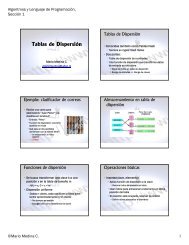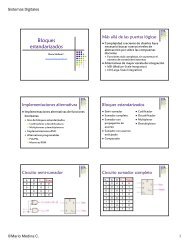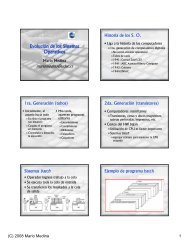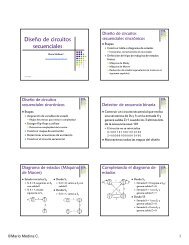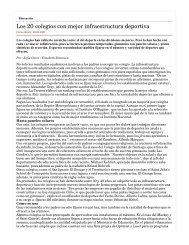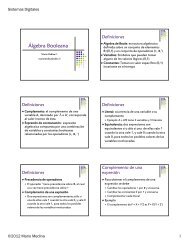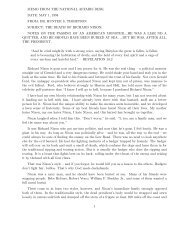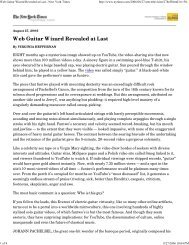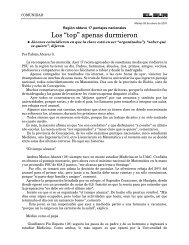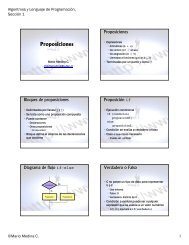A Symbolic Analysis of Relay and Switching Circuits
A Symbolic Analysis of Relay and Switching Circuits
A Symbolic Analysis of Relay and Switching Circuits
Create successful ePaper yourself
Turn your PDF publications into a flip-book with our unique Google optimized e-Paper software.
27<br />
WhA-rA<br />
.- . -<br />
TIl"<br />
- jk 1-g the ne~ative <strong>of</strong> trle hinderance function<br />
~<br />
from node j to k, the network considered 8S a two te~-<br />
1nal cirellit.<br />
Thus for the three node network <strong>of</strong><br />
Fig. 16 the X' <strong>and</strong> TIl matrices are as shown at the<br />
right.<br />
2<br />
xl\y<br />
lL~3<br />
Zl<br />
z<br />
1 Xl z' 1 X '+y' Z I z'+x1y'<br />
x' 1 y' x'+y' z' 1 y'+X'7.'<br />
y' 1 z'+x'y' :fl+X'Z' 1<br />
Fig. 16 X' Matrix U' Matrix<br />
Theo~em: Any pO~er <strong>of</strong> the XI matrix <strong>of</strong> 8 network<br />
gives a netvlork which is equivalent With respect<br />
to 811 nodes. The matrix is raised to a powsr by<br />
the usual rule for multiplication <strong>of</strong> matrices.<br />
Theorem:<br />
I t<br />
, I<br />
1 U12 .... U 1n<br />
1 X 12<br />
... X 1n<br />
s<br />
I t ,<br />
Xl<br />
2rl<br />
-<br />
U 21 1 .... U 2n<br />
X 21<br />
1 ...<br />
-<br />
..... ...........<br />
U~l· • • • • • · • • •<br />
...... " .<br />
, ,<br />
•<br />
X 1n<br />
•.•.... 1<br />
II<br />
s ~<br />
n-l<br />
Theorem: Any node., say the kth, may be alirnina ted<br />
les'tling the network equivalent with respect to all<br />
remaining no des by adding to each eleraent X~s<br />
<strong>of</strong> the



